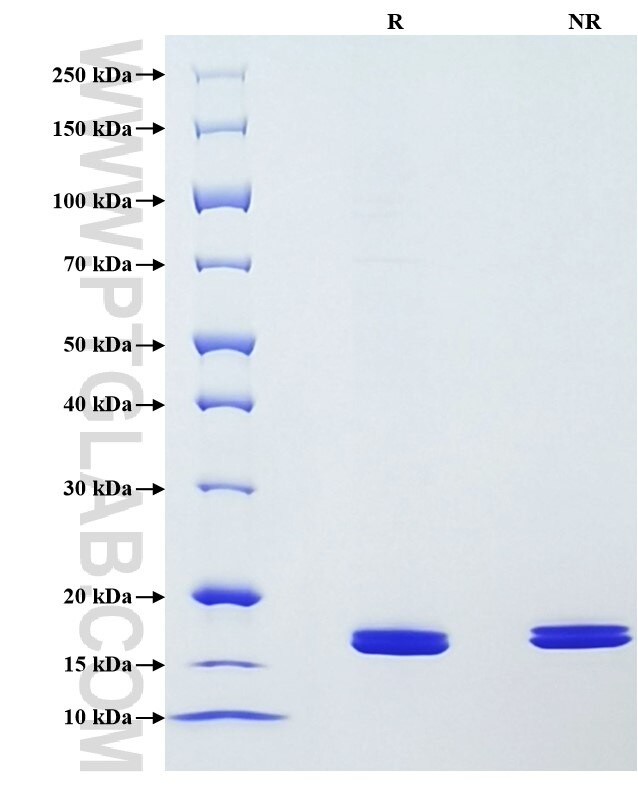Recombinant Mouse Chemerin protein (His Tag)
Species
Mouse
Purity
>90 %, SDS-PAGE
Tag
His Tag
Activity
not tested
Cat no : Eg0875
Validation Data Gallery
Product Information
| Purity | >90 %, SDS-PAGE |
| Endotoxin | <0.1 EU/μg protein, LAL method |
| Activity |
Not tested |
| Expression | HEK293-derived Mouse Chemerin protein Glu21-Ser156 (Accession# Q9DD06) with a His tag at the C-terminus. |
| GeneID | 71660 |
| Accession | Q9DD06 |
| PredictedSize | 16.6 kDa |
| SDS-PAGE | 16-17 kDa, reducing (R) conditions |
| Formulation | Lyophilized from 0.22 μm filtered solution in PBS, pH 7.4. Normally 5% trehalose and 5% mannitol are added as protectants before lyophilization. |
| Reconstitution | Briefly centrifuge the tube before opening. Reconstitute at 0.1-0.5 mg/mL in sterile water. |
| Storage Conditions |
It is recommended that the protein be aliquoted for optimal storage. Avoid repeated freeze-thaw cycles.
|
| Shipping | The product is shipped at ambient temperature. Upon receipt, store it immediately at the recommended temperature. |
Background
Chemerin, also named as TIG2 and RARRES2, is adipocyte-secreted protein (adipokine) that regulates adipogenesis, metabolism and inflammation through activation of the chemokine-like receptor 1 (CMKLR1). Its other ligands include G protein-coupled receptor 1 (GPR1) and chemokine receptor-like 2 (CCRL2). It positively regulates adipocyte differentiation, modulates the expression of adipocyte genes involved in lipid and glucose metabolism and might play a role in angiogenesis, a process essential for the expansion of white adipose tissue. Chemerin have both pro- and anti-inflammatory properties depending on the modality of enzymatic cleavage by different classes of proteases.
References:
1. Helfer G, et al. (2018) J Endocrinol.238(2):R79-R94. 2. De Henau O, et al. (2016) PLoS One.11(10):e0164179. 3. Treeck O, et al. (2019) Int J Mol Sci.20(15):3750. 4. Su X, et al. (2021)Clin Chim Acta.517:41-47.
